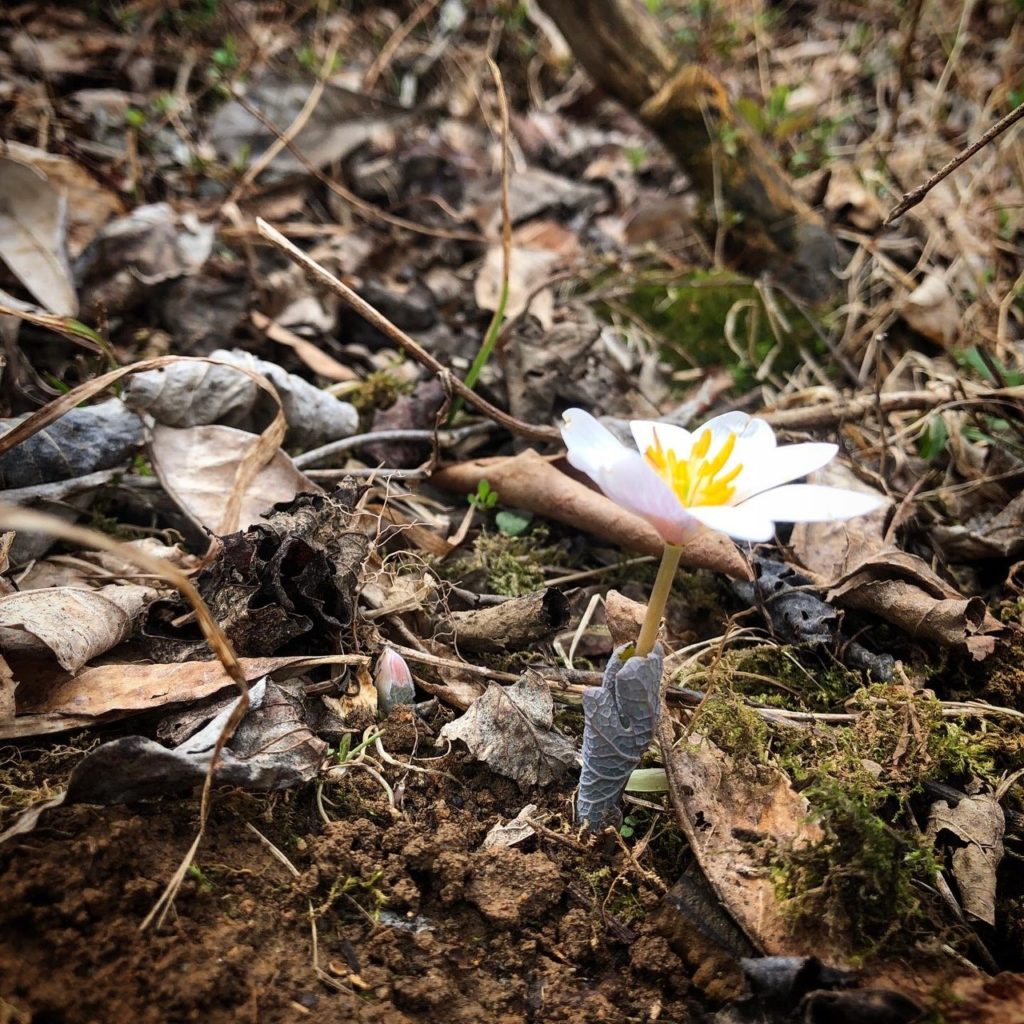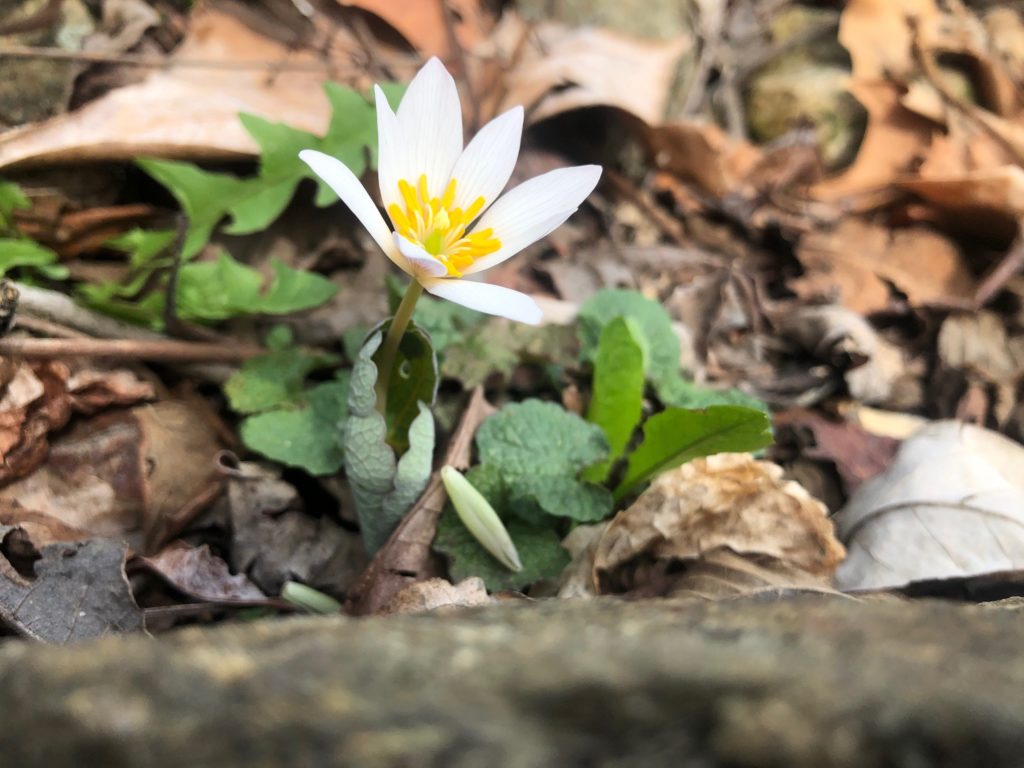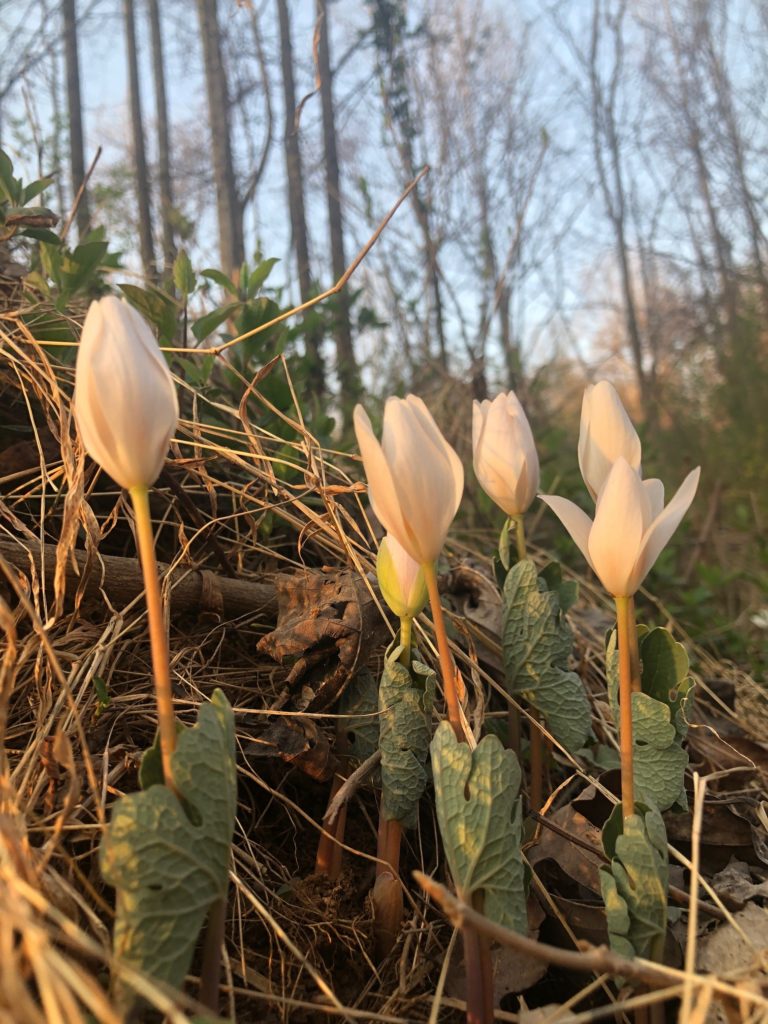
What’s in Bloom | Bloodroot
March 22, 2021
Bloodroot (Sanguinaria canadensis) is a perennial wildflower in the poppy family whose blooms are one of the first signs of spring. They grow in rich woodland soils and produce single, showy white flowers with bright yellow stamens and a single, lobed basal leaf that often wraps around the flower’s stem. Each flower only lasts for one to two days.
Bloodroot is named for its rhizomes, which are thick and produce a reddish juice or sap if cut. This juice has traditionally been used as a dye for clothing, baskets, and body paints by Native American cultures. The leaves and rhizomes also contain toxins that deter herbivores. Some sources claim that these toxins have potential use as antiseptics and emetics, but the plant is highly poisonous and should not be ingested.
Benefits to Biodiversity | As a spring ephemeral, bloodroot is an important source of early spring resources for pollinators such as native bees, flies, and beetles. Its seeds, which have fleshy appendages, are dispersed by woodland ants.

